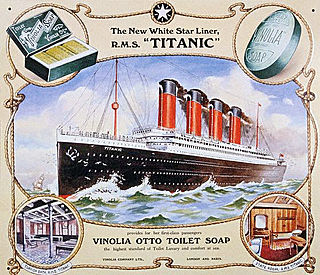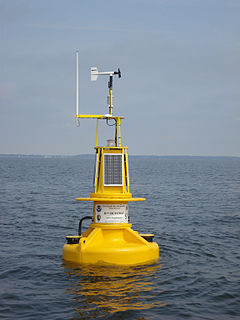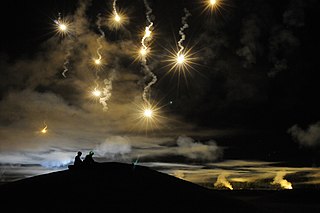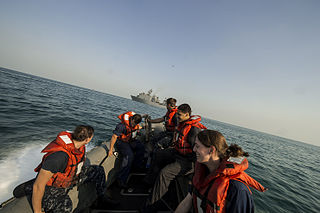 W
WThe American Power Boat Association (APBA) is an American membership-owned corporation. In 1903, New York's Columbia Yacht Club had formulated a constitution for what ultimately became the APBA. It is the United States sanctioning authority for the Union Internationale Motonautique, the world governing body for powerboat racing. Headquartered in Eastpointe Michigan, the APBA has over 3,500 active members and sanctions over 150 races nationwide. The APBA sanctions all types of power boat racing from 205+ mph Unlimited Hydroplanes to smaller Junior Class racing starting at age 9.
 W
WThe automatic identification system (AIS) is an automatic tracking system that uses transceivers on ships and is used by vessel traffic services (VTS). When satellites are used to detect AIS signatures, the term Satellite-AIS (S-AIS) is used. AIS information supplements marine radar, which continues to be the primary method of collision avoidance for water transport. Although technically and operationally distinct, the ADS-B system is analogous to AIS and performs a similar function for aircraft.
 W
WA buoy is a floating device that can have many purposes. It can be anchored (stationary) or allowed to drift with ocean currents.
 W
WThe sinking of the RMS Titanic resulted in the following changes in maritime policy:
 W
WChesapeake Bay Interpretive Buoy System (CBIBS) is a network of observational buoys that are deployed throughout the Chesapeake Bay to observe the estuary's changing conditions and to serve as way points along the Captain John Smith Chesapeake National Historic Trail. They are maintained by the United States National Oceanic and Atmospheric Administration (NOAA). These "smart buoys" observe and record meteorological, oceanographic and water quality data which can be obtained in real-time by using mobile apps or by visiting http://buoybay.noaa.gov/. CBIBS is an operational buoy system in the Chesapeake Bay dedicated to maintaining a broad range of measurements necessary to track Bay restoration progress.
 W
WAn engine department or engineering department is an organizational unit aboard a ship that is responsible for the operation, maintenance, and repair of the propulsion systems and the support systems for crew, passengers, and cargo. These include the ship engine, fuel oil, lubrication, water distillation, separation process, lighting, air conditioning, and refrigeration.
 W
WAn engine officer, also called an engineering officer or simply engineer, is a licensed mariner qualified and responsible for operating and maintaining the propulsion plants and support systems for a watercraft and its crew, passengers and cargo. Engine officers are usually educated and qualified as engineering technicians.
 W
WThe European Maritime Safety Agency (EMSA) is a European Union agency charged with reducing the risk of maritime accidents, marine pollution from ships and the loss of human lives at sea by helping to enforce the pertinent EU legislation. It is headquartered in Lisbon.
 W
WA flare, also sometimes called a fusée, is a type of pyrotechnic that produces a bright light or intense heat without an explosion. Flares are used for distress signaling, illumination, or defensive countermeasures in civilian and military applications. Flares may be ground pyrotechnics, projectile pyrotechnics, or parachute-suspended to provide maximum illumination time over a large area. Projectile pyrotechnics may be dropped from aircraft, fired from rocket or artillery, or deployed by flare guns or handheld percussive tubes.
 W
WThe International Code of Signals (ICS) is an international system of signals and codes for use by vessels to communicate important messages regarding safety of navigation and related matters. Signals can be sent by flaghoist, signal lamp ("blinker"), flag semaphore, radiotelegraphy, and radiotelephony. The International Code is the most recent evolution of a wide variety of maritime flag signalling systems.
 W
WThe International Convention on Load Lines (CLL), was signed in London on 5 April 1966, amended by the 1988 Protocol and further revised in 2003. The convention pertains specifically to a ship's load line, a marking of the highest point on a ship's hull that can safely meet the surface of the water; a ship that is loaded to the point where its load line is underwater and no longer visible has exceeded its draft and is in danger because its capacity has been exceeded.
 W
WThe International Mobile Satellite Organization (IMSO) is the intergovernmental organization that oversees certain public satellite safety and security communication services provided via the Inmarsat satellites. Some of these services concern:Global Maritime Distress Safety System (GMDSS) established by the International Maritime Organization (IMO) Search and rescue co-ordinating communications Maritime safety information (MSI) broadcasts Aeronautical mobile satellite (route) service, or AMS(R)S, through compliance with the Standards and Recommended Practices (SARPs) established by the International Civil Aviation Organization (ICAO) General communications
 W
WA traffic separation scheme is an area in the sea where navigation of ships is highly regulated. Each TSS is designed to create lanes in the water with ships in a specific lane all travelling in (roughly) the same direction.
 W
WThe Marine Department of the Hong Kong Government is responsible for maintaining safety and environmental protection of the harbour, ships registered/foreign ships in Hong Kong and monitor shipping traffic in Hong Kong Waters, search and rescue operations for large waters of the South China Sea.
 W
WThe Marine Police Force, Royal Malaysia Police is the Marine Police division of the Royal Malaysia Police tasked with maintaining law and order and execute national security operations in the Malaysian Territorial Waters (MTW) and no boundaries till the high seas. The Marine Police Force serves under the control of the Malaysian Internal Security & Public Order (ISPO) Department with the role of safeguarding the security of Malaysian waters from any threats.
 W
WThe Marine Region is a branch of the Hong Kong Police Force, more widely known as the Marine Police. The marine police patrol 1,651 km2 (637 sq mi) of waters within the territory of Hong Kong, including 263 islands. The Marine Region with about 3,000 officers, and a fleet of 142 in total, made up of 70 launches and 72 craft is the largest of any civil police force.
 W
WThe Maritime and Port Authority of Singapore is a statutory board under the Ministry of Transport of the Government of Singapore.
 W
WMaritime New Zealand is a Crown entity and also a state maritime safety authority responsible for protecting the maritime transport sequence and marine environment within New Zealand and maintaining safety and security.
 W
WA Maritime Safety and Security Team, or MSST, is a counter-terrorism team of the United States Coast Guard established to protect local maritime assets. It is also a harbor and inshore patrol and security team that includes detecting and, if necessary, stopping or arresting submerged divers, using the Underwater Port Security System. It is the only special operations group that can arrest submerged divers.
 W
WThe Pakistan Maritime Security Agency is a coast guard branch of the Pakistan Navy. It is a Navy-managed and Navy-controlled law enforcement agency whose mission is to provide protection to the Pakistan's maritime interests and enforcement of maritime law with jurisdiction over the domestic and international waters of Pakistan including the exclusive economic zone.
 W
WA muster drill, sometimes referred to as a lifeboat drill or a boat drill, is an exercise that is conducted by the crew of a ship prior to embarking on a voyage. A muster drill prepares passengers for safe evacuation, in the event of an emergency on board the ship, and familiarizes the crew and the passengers with escape routes. In a muster drill, the use of life vests and the escape routes from the ship are explained to the passengers. It is typically conducted approximately 30 minutes prior to the ship's scheduled departure time, and all guests must remain silent during the drill so that everyone will be able to hear the safety announcements from the captain. To alert that the drill is in progress, a general emergency alarm is sounded, and the captain then explains what the passengers need to do.
 W
WThe Safe Boating Campaign is a year-round campaign focused on spreading the message of boating safety, encouraging boater education, and helping to save lives. It kicks off each year the full week before Memorial Day Weekend with National Safe Boating Week, with focused efforts during the peak boating season of May – September. Promoting life jacket wear by every boater is the leading goal of the Campaign.
 W
WA personal flotation device is a flotation device in the form of a vest or suite that is donned and fastened to a user to prevent the wearer from drowning in a body of water. The device will keep the wearer afloat with his/her head and mouth above the surface – he/she does not have to swim or tread water in order to stay afloat and can even be unconscious.
 W
WThe Port of Hong Kong, located by the South China Sea, is a deepwater seaport dominated by trade in containerised manufactured products, and to a lesser extent raw materials and passengers. A key factor in the economic development of Hong Kong, the natural shelter and deep waters of Victoria Harbour provide ideal conditions for berthing and the handling of all types of vessels. It is one of the busiest ports in the world, in the three categories of shipping movements, cargo handled and passengers carried.
 W
WPowerboat South Africa (PSA) is a racing association for powerboats in South Africa. It is recognised as the sanctioning authority by the Union Internationale Motonautique (UIM), the world body for powerboating. It is the governing body of the sport in South Africa as recognised by SASCOC.
 W
WThe Special Task and Rescue or STAR is the maritime tactical unit of the Malaysian Maritime Enforcement Agency established to protect the local maritime assets of Malaysia.
 W
WThe Marine Assault Team (MAST), formally known as Royal Malaysia Police Combat Divers Unit is a maritime special operations squad, and part of the Royal Malaysia Police's Marine Operations Force. Fully operational on 2007, the UNGERIN conducts anti-piracy and counter-terrorism operations in the coastal waters surrounding Malaysia and assists the marine police to respond swiftly.
 W
WWatchkeeping or watchstanding is the assignment of sailors to specific roles on a ship to operate it continuously. These assignments, also known as at sea watches are constantly active as they are considered essential to the safe operation of the vessel and also allow the ship to respond to emergencies and other situations quickly. These watches are divided into work periods to ensure that the roles are always occupied at all times, while those members of the crew who are assigned to work during a watch are known as watchkeepers.